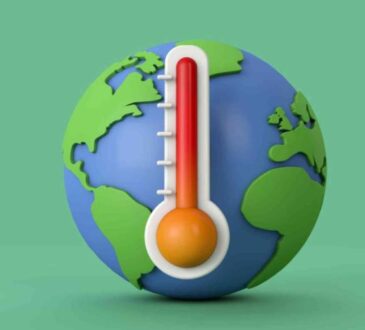Sustainable living: The world’s top ten least ‘green’ countries –
Sustainable living is a reflection of how much a country cares about preserving and restoring the environment and the health of its citizens. Here are the top ten least ‘green’ countries.
Sustainable living specialists GreenMatch conducted a major study to discover the most and least green countries in the world. Their study combined and compared four different reports: the Environmental Performance Index (EPI) from Yale University, a report from EU’s Joint Research Centre (JRC), Green Future Index (GFI) from Massachusetts Institute of Technology (MIT), and the IQ Air information platform. The world’s top ten least ‘green’ countries are as follows:
1) Qatar – is placed last on Greenmatch’s list of greenest countries. It ranks 137th on the EPI and 73rd on the GFI. Its annual average PM2.5 concentration is a worrying 38.2 μg/m³, placing it 66th. Qatar also comes in last place for its CO2 emissions per capita with 35.64 tonnes. This is backed up by the UN’s evaluation of Qatar’s progress towards achieving the Sustainable Development Goals. In regards to goal 7 (Affordable and Clean Energy) and goal 13 (Climate Action), major challenges remain, and for goal 11 (Sustainable Cities and Communities), significant challenges still remain on its path to sustainable living.
2) Iran – also needs to improve in regards to its sustainability efforts. It only ranks 133rd on the EPI and 76th on the GFI. In regards to CO2 emissions per capita it ranks 52nd with 8.26 tonnes, and for annual average PM2.5 concentrations it ranks 59th with 30.3 μg/m³. The Sustainable Development Report also assesses that major challenges still remain for Iran in regards to affordable and clean energy. Furthermore, for goals 11 and 13, Iran is assessed to be stagnating with significant challenges remaining.
3) Turkey – does not fare well on either the EPI or GFI, ranking 172nd and 69th place respectively. It also ranks 48th place for the lowest annual average PM2.5 concentrations with 20 μg/m³ and 35th place for CO2 emissions per capita with 4.83 tonnes. This is confirmed by the Sustainable Development Report, that states challenges remain for affordable and clean energy, significant challenges remain for sustainable cities and communities, and major challenges remain for climate action.
4) China – has quite a striking difference in where it ranks on the EPI compared to the GFI, 160th for the former and 26th for the latter. For annual average PM2.5 concentrations, it ranks 61st with 32.6 μg/m³, and for CO2 emissions per capita it ranks 51st with 8.2 tonnes. In regards to the Sustainable Development goals, (significant) challenges remain for China across goals 7, 11, and 13. However, it is moving in the right direction to sustainable living, as it is deemed to be “moderately increasing” across these goals.
5) Saudi Arabia – also has some way to go in regards to becoming more green. It ranks 109th on the EPI and 51st on the GFI. Its scores for annual average PM2.5 concentrations and CO2 emissions per capita are also not great. Ranking 62nd with 32.7 μg/m³ for the former and 66th with 16.96 tonnes for the latter. Looking at the Sustainable Development Goals it is clear that both significant and major challenges remain for Saudi Arabia in regards to goals 7, 11, and 13. However, it has been assessed as “moderately increasing” across these goals, so hopefully there will be improvements in the near future.
6) Vietnam – performs relatively well in regards to its CO2 emissions per capita, ranking 21st with 3.27 tonnes. However, its rankings across the other studies could do with a major boost. It ranks 178th on the EPI, 56th on the GFI, and 53rd for the lowest annual average PM2.5 concentrations with 24.7 μg/m³. According to the Sustainable Development Report, (significant) challenges remain for Vietnam in the areas of affordable and clean energy, sustainable cities and communities, and climate action.
7) Indonesia – total carbon emissions are relatively high at 568.27 Mt, however, due to its large population size it only produces 2.09 tonnes per capita, leaving it in 17th place in the league of sustainable living. Otherwise, Indonesia ranks quite poorly. It is 164th on the EPI and 70th on the GFI. In regards to the lowest annual average PM2.5 concentrations, it ranks 64th with 34.3 μg/m³. This is confirmed by the Sustainable Development Report, which states challenges still remain across goals 7, 11, and 13 for Indonesia. In particular for goal 11 (Sustainable Cities and Communities).
8) Malaysia – also ranks in the bottom ten for the greenest countries in the world. It comes in 130th place on the EPI and 65th on the GFI. It ranks 50th for CO2 emissions per capita with 7.98 tonnes, and 45th place for annual average PM2.5 concentrations with 19.4 μg/m³. This is backed up by the Sustainable Development Report, which states that challenges (of varying magnitudes) remain for Malaysia in regards to goals 7, 11, and 13.
9) Algeria – is another country in the bottom ten that ranks relatively well in terms of its CO2 emissions per capita, in 23rd place with 3.77 tonnes. However, it still has work to do in regards to the other metrics. It ranks 155th on the EPI, 75th on the GFI, and 47th on the lowest annual average PM2.5 concentrations with 20 μg/m³. In regards to the Sustainable Development goals, significant and major challenges remain for Algeria across goals 7, 11, and 13. In addition to this, for goal 11 (Sustainable Cities and Communities) it has even been deemed to be regressing.
10) Kuwait – ranks 61st out of the 69 countries on the sustainable living list. It comes in 87th position for the EPI and 58th for the GFI. It has a rank of 68th for CO2 emissions per capita with 20.91 tonnes and ranks 58th for the lowest annual average PM2.5 concentrations with 29.7 μg/m³. Again, this is confirmed by the Sustainable Development Report, which assesses Kuwait to have significant and major challenges remaining across goals 7, 11, and 13.




